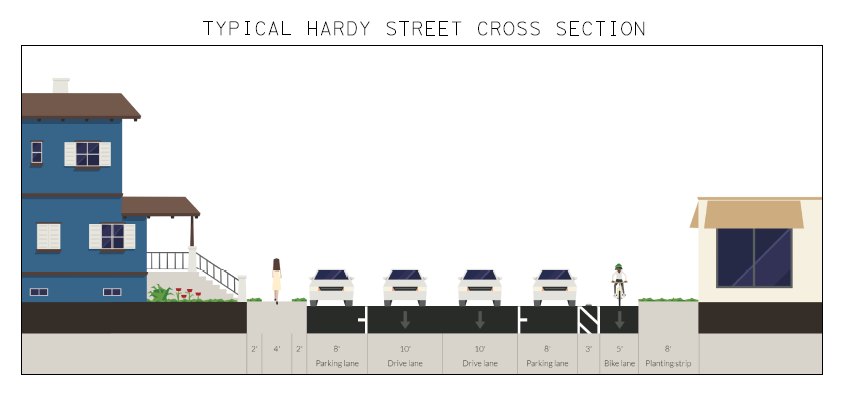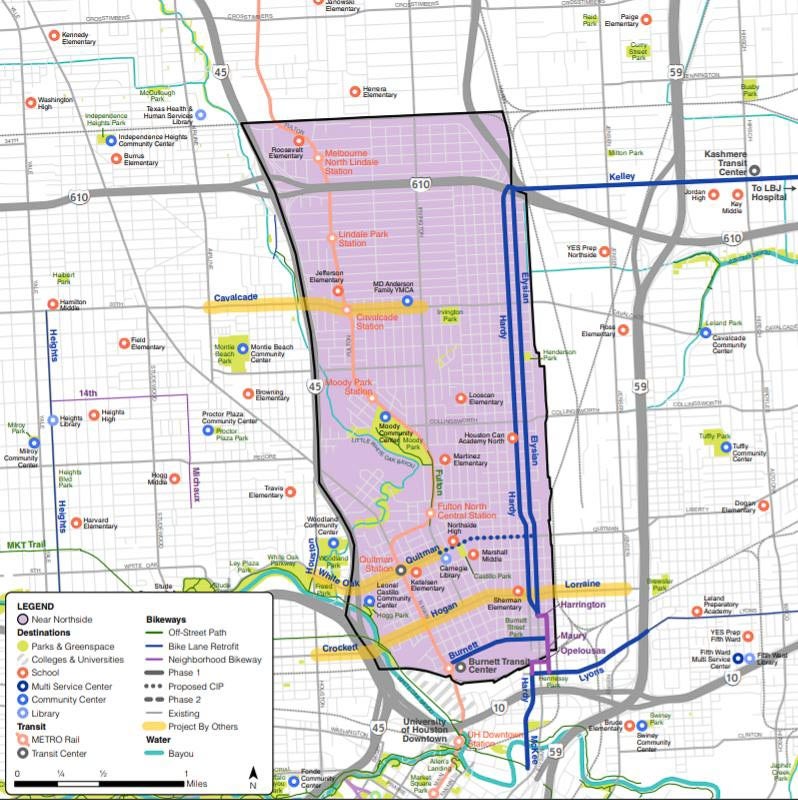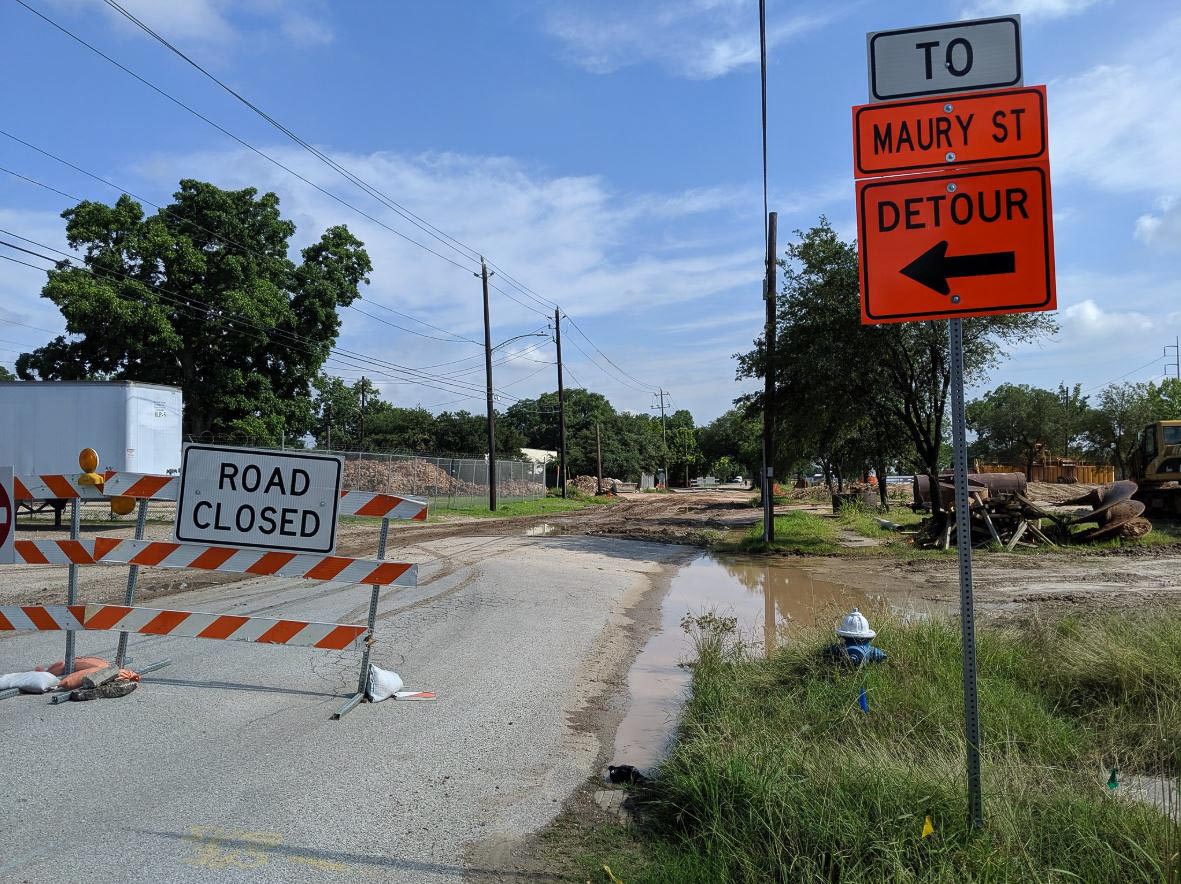Teams went out to canvas the condition of the neighborhood's sidewalks — including whether they were clear of overgrowth and obstructions or had uneven pavement or breaks in the pavement — and the bikeways, which were notably sparse for a neighborhood where more than 13 percent of the area's households don't own a car.
“The walk audit allows us to get really granular data about the state of streets, sidewalks, and intersections in a given community," said Kyle Shelton, director of strategic partnerships at Kinder Institute. "That concrete information augments the more experiential information we collected from resident’s via a streets/mobility survey to give us a really complete picture of the state of streets in a community." Such audits and surveys can be time consuming but offer critical data, added Shelton. "Both forms of data are hard to get and can really enrich an overall complete streets/street safety initiative as is being undertaken across Houston/Harris County."
The city is currently implementing plans to make the biking infrastructure better in the neighborhood. In April, construction ended on a more than 2.66-mile stretch of Hardy and Elysian Street to implement Houston's first parking-protected bike lanes that maintain 5 feet in width of bike lanes, 3 feet in width of barrier space, and 8 feet in width for on-street parking.

Renderings of the bike-lane improvements in the Near Northside neighborhood. Source: Houston Bike Plan

Source: Houston Bike Plan
These improvements aim to better connect the community to schools, parks, hospitals and other community staples. Similar plans were implemented in December 2018 along Lyons Avenue.
While these improvements are steps in the right direction, the walk audit's in-depth data will likely add to the case for additional improvements in the neighborhood.
“We’ve had conversations with members of non-profit organizations and schools on how information about sidewalk availability and conditions can improve safety, especially for families walking to schools," said Dian Nostikasari, a senior fellow at the Kinder Institute. "Using this type of information, we contributed to discussions for getting funding to build more sidewalks around a local school in Near Northside that was ultimately supported by the city."
Nostikasari's past walk audit in the Gulfton neighborhood brought additional attention to the walkability safety issues in the area and helped prompt city officials and nonprofits to work together to invest in the area. On April 17, Mayor Sylvester Turner announced a partnership with Together for Safer Roads, a roadway safety advocacy group, to invest $150,000 to study and solicit ways to make Gulfton's 2,000-foot stretch of Hillcroft Street safer. In addition, the Houston Public Works Department committed $500,000 from the city's capital improvement program to go towards safety improvement projects on four blocks of Hillcroft from Bellaire Boulevard north to High Star Drive.
"We hope that the community is able to use the information in conversations with the city about how to address shortcomings and issues," Shelton said. "The audit outcomes can also be used by advocates and public departments to simply better understand the mobility and infrastructure challenges our neighborhoods face. For us to make the most informed decisions we can about infrastructure investments and improvements, we need to know where the biggest issues are.”

